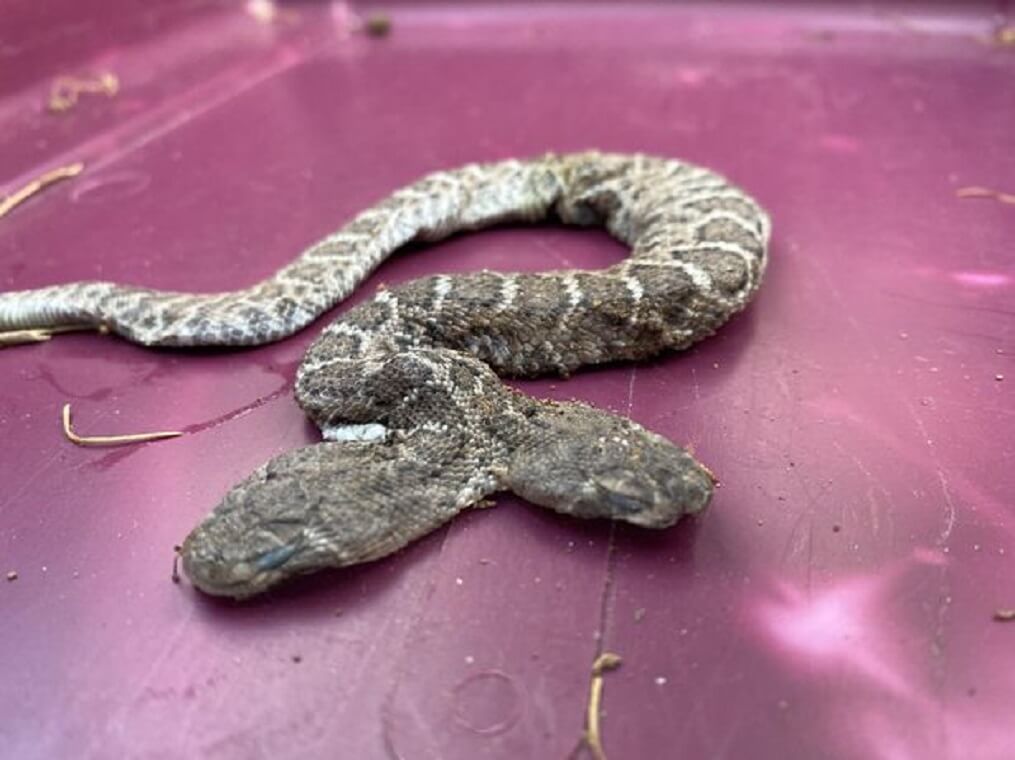
A “once in a lifetime” discovery has been recorded in the US state of Arizona, after a mutant two-headed rattlesnake was found in a nest of deadly serpents.
According to local media reports, the discovery was made after a snake handler named Greyson Getty was called to clear out a den of deadly snakes.
Greyson Getty found the two-headed rattlesnakes wriggling among other deadly snakes in the den.
Mr Greyson Getty said:
“It was incredibly exciting. I had already removed four adult rattlesnakes and seven other freshly-born baby rattlesnakes from that hole. Even for a seasoned professional such as myself, that’s already a pretty adrenaline-packed way to start your morning. So to then pull out a two-headed rattlesnake which, dead or alive, is incredibly rare, had me absolutely overcome with excitement.”

Mr Getty, whose experience in handling venomous snakes spans several years, described the discovery as a “once in a lifetime” experience.
“It was such a crazy once in a lifetime observation that I couldn’t even have dreamt it up,” he said.
Rattlesnakes are venomous snakes. Their bite can be fatal is the victim does not receive proper treatment on time. Due to the ready availability of rattlesnake anti-venom, bites from the snake is rarely fatal these days.
Another two-headed timber rattlesnake was also found in New Jersey in 2019.
How does a snake get two heads?
The condition of being born with two heads is called dicephaly – a rare but natural phenomenon thought to be caused by a gene mutation. Snakes born with two heads also have two brains but one head usually would be dominant over the other.
Only one out of every 100,000 snakes born in the wild will have two heads, meaning the condition is quite rare. Animal experts have also said having two heads brings no advantage to the animal and can sometimes increase the animal’s chance of being killed by predators.


